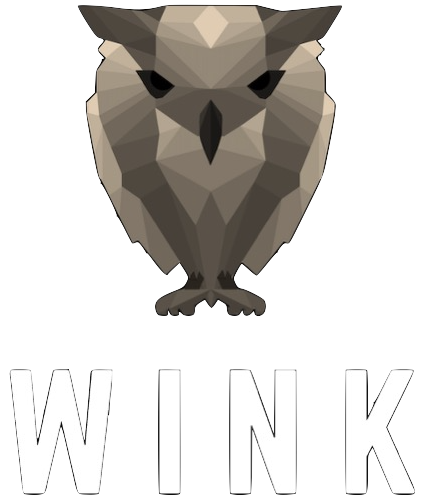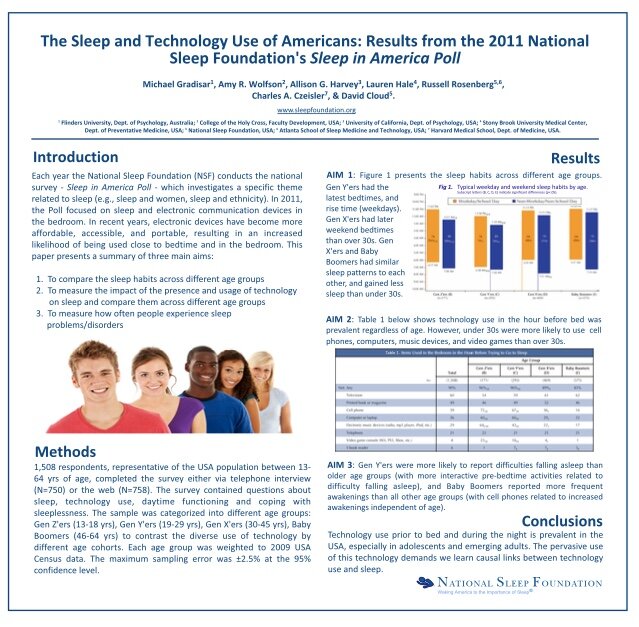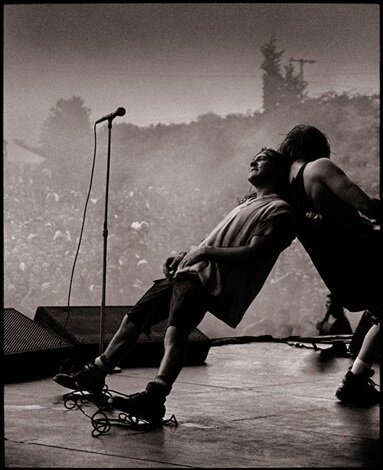#32 - The National Sleep Foundation: Behind the Scenes
Note: WINK is not commercially engaged with the National Sleep Foundation…
It was April 2010 and I received a suspicious email.
An email from someone I’ve never heard of - inviting me to be part of the next Sleep in America Poll - hosted by the National Sleep Foundation (NSF).
NSF? WTF?
Those who know me well know that I’m a practical joker - and I receive pranks more than I give them …
LEFT: Me trying to share the humour on my office door. RIGHT: what happens to your office when you come back from the Christmas break. Quick Tip: unwrap the bin first!
So when I received an email to be on an expert panel for the National Sleep Foundation, I wondered who was pranking me this time.
So I replied and said “Yeah, Sure thing. Happy to”. My response was well received …
Fast Forward to Later that Year
I received a second email from this person - only this time, the email is not just to me. Cc’d are a host of sleep experts - in fact, sleep legends!:
Charles ‘Chuck’ Czeisler (Harvard University) - this guy is a world expert on circadian rhythms and light.
Allison G. Harvey - (Uni of California, Berkeley) - came from researching the psychology of trauma to hitting the insomnia world like a tidal wave.
Amy Wolfson - adolescent sleep legend - and massive advocate for starting school times later (in the USA).
Lauren Hale - to be honest, I had not heard of Lauren. But by God she was good, and incredibly helpful
Russell Rosenberg - and again, I hadn’t heard of Russell, but he was working for the NSF and was a great Chair of this expert panel.
Little ol’ me - seriously, I was the youngest and the earliest in my career.
I was also the only Australian on this expert panel (well, although Allison Harvey was residing in the USA, she still has her Australian citizenship - so I wasn’t completely alone). So this was the first Sleep in America Poll with an Aussie invasion.
Sleep in America Polls
Every year, the NSF conducts a survey of Americans on a particular topic about sleep.
Topics include: Women & Sleep, Shiftwork & Sleep, Children & Sleep, Sleep & Ethnicity, Sleep & Pain, Exercise & Sleep - I won’t name them all, so you can look at them here.
Next year, will be their 30th poll (yes, they’ve been doing A LOT of polls - since 1991 - when music was great).
The 2011 Sleep in America Poll - Technology and Sleep
Whilst there had been a dramatic advance in technological inventions in the 2000s (eg, WiFi, the iPhone) the research on technology and sleep was just beginning.
In early 2010, we had just published our first experimental study where we provided teenagers with either an hour of Call of Duty in the hour before bed - or - watching an hour of March of the Penguins (a documentary about … penguins).
The study was rejected by the Journal of Sleep Research (for not having a large enough sample - side note: we had 13 teenagers - yet this journal previously published a similar study with 7 people. We appealed, and received a slightly hostile reply from the Editor-in-Chief, Prof Derk Jan-Dijk - maybe he didn’t sleep well the night before?).
Our study was then rejected by the journal Sleep.
We then submitted it to Sleep’s cousin - the Journal of Clinical Sleep Medicine - and it was accepted (you can download the paper for free here).
Why am I telling you this?
Well for those who are early in their research career - it’s a lesson to show that persistence pays off. Indeed, regardless of your career - it’s a demonstration that persistence pays off. And that sometimes, rejections are meant to be. Because they may lead to bigger and better things…
And in this case, our study was promoted as a press release by the Journal of Clinical Sleep Medicine.
And this caught the eye of the National Sleep Foundation …
Conference Calls
In late 2010, I was on my first sabbatical, touring around Europe (ie, Portugal, Wales, England, Norway and Sweden - aka, Do Science Kids!).
Thus, I was ‘attending’ a number of late-night conference calls in different countries.
First, we had a draft survey to comment on.
You can imagine when you have half-a-dozen experts - (with slightly different research foci) - that they want to add extra questions. So the survey grew.
Next, we were informed about how the survey was going to be distributed. Back in 2010, not everyone was internet-savvy. And because the target group were to be humans between 13 to 64 years, some were going to be more internet savvy than others. Thus, some were going to be doing the survey online - and others were going to do it over the phone.
Finally, the data were collected from over 1,500 people and we were informed of the results.
To this day, one of those results stunned us all…
97%
Before seeing the data, our plan was to compare the sleep of those who used technology in the hour before bed - or not.
Then Russell Rosenberg read out one of the first findings …
“97% of the sample reported using technology in the hour before bed at least a few times a week”.
Everyone was surprised.
We knew there might be a possibility that the figure was going to be high - but this figure means nearly everyone is doing it. No point now comparing a very small minority to … virtually everyone!
This was a Turning Point
With this 97% statistic, I realised that there is no point trying to prevent people from using technology before bed. That opportunity was missed.
Now, it was a matter of ‘harm minimisation’ - a term using in addiction and recovery - for example, using methadone instead of heroin reduces the probability of dying.
Or another way of putting it was - what form of technology is less harmful?
This is a research question I’m still testing. Still searching for the answer. I think we’re getting closer.
But back to the NSF …
The final call finished with Russell Rosenberg thanking us for our ‘time and energy’ (I love that phrase). And saying that from here we could be in email contact to discuss how we section the survey into parts so we can turn the Poll into scientific publications.
As a researcher early in my career - this was exciting !
The thought that this work could lead to several publications (if each panel expert led their own publication) would certainly help to boost my publication numbers, and the odds for successfully obtaining grant funding to do big projects.
March 2011
The NSF contacted us to get some quotes as they were about to release the 2011 Poll and wished to do a press release.
This was a good return-on-investment.
A single email reply led to a statistic that blew my mind.
By mid-March, the NSF informed us that the press release had over 1 billion media impressions.
Whilst that doesn’t mean 1 billion people read the press release, it means a lot of people did.
Then …
Silence
Some months went by and no one was mentioning anything about turning the survey into a scientific publication.
As I had a conference coming up later that year, I thought this might be a good way to get the ball rolling.
So I crunched some of the NSF data, wrote an abstract, ran it past my panel colleagues, and submitted it.
Luckily, I was able to get both a talk at the conference as well as a poster presentation…
Kyoto 2011
Did I already say Do Science Kids? Because it’s just one way to see more of the world we live in.
I presented my talk about the Sleep in America Poll at this conference - and got a bit slammed.
Not only by a clever question by an audience member, but also by one of the other speakers in the symposium. Prof Nick Glozier’s talk basically detailed how poor the National Sleep Foundation Polls were, yet that they are often referred to by scientists.
Everyone left the symposium with that sort of feeling that people get walking out of a cinema where the bad guy wins.
But what he was trying to say is that the NSF polls needed to up their game when it came to their scientific methods.
And it had some truth to it.
Whilst these Polls were cited often, their corresponding scientific publications were not. This was probably because there were barely any Polls that led to a scientific publication (about 2-3 publications from about 20).
But to end this on more of a positive note, I did win a prize for one of the Best Posters at the conference (even though I printed an error on the poster and had to change it with liquid paper).
The Home Straight …
The process of publishing the 2011 Sleep in America Poll was not straight forward.
Navigating several experts’ feedback is a bit challenging (albeit, cherished!).
Then there was the fact that we had data but no ethics committee approval was sought beforehand. This was an interesting academic exercise, as I learned there are instances where ethics approvals are not needed.
And then there were the Editors and the Reviewers of journals.
We aimed for Sleep first.
We received a lukewarm response from one reviewer - and a positive and constructive review from the other reviewer.
But the conclusion was a rejection.
So we went for Sleep’s cousin (again) - the Journal of Clinical Sleep Medicine.
In true technology fashion, publishing this research was like a video game - where you can beat each bad guy in turn, until you arrive at The Boss.
The Boss was relentless.
Not just lots of comments to address, but big one’s too.
This meant - reluctantly - having to admit A LOT of faults of the National Sleep Foundation’s Sleep in America Polls.
But in the end, it was published - and just snuck into the December 2013 issue (3 years after this journey began).
Not Happy, Michael.
The CEO of the National Sleep Foundation - David Cloud - contacted me soon after the study was published.
David was not happy.
He did not like the admissions we made in the study about the scientific limitations of the Sleep in America Polls.
I passed The Boss’ comments onto David so he saw the work we had to do when trying to get the study published. This eased David’s pain a bit. He wanted to know who this reviewer was. But that is not known as reviewers have the protection of anonymity.
Nevertheless, I have a suspicion who that Boss was - and if so - thank you - it made the publication better!
Interesting that his name badge is turned around …
Lesson Learned?
One small thing (a student project measuring teenagers’ sleep after playing Call of Duty) can lead to big things (being part of something that produces over 1 billion media impressions)
Rejection is sometimes meant to be
Professors are too busy to lead publications. But their experience strengthens said publications
Technology is here to stay. We need the science to inform us which are least harmful.
Surveys provide great information, but they need to be reviewed by independent experts and be published in scientific journals.
The National Sleep Foundation is a great not-for-profit organisation trying to educate the world about the importance of sleep - and it’s been doing so since the 1990s (when music was at it’s best).
Prof Mike Gradisar











